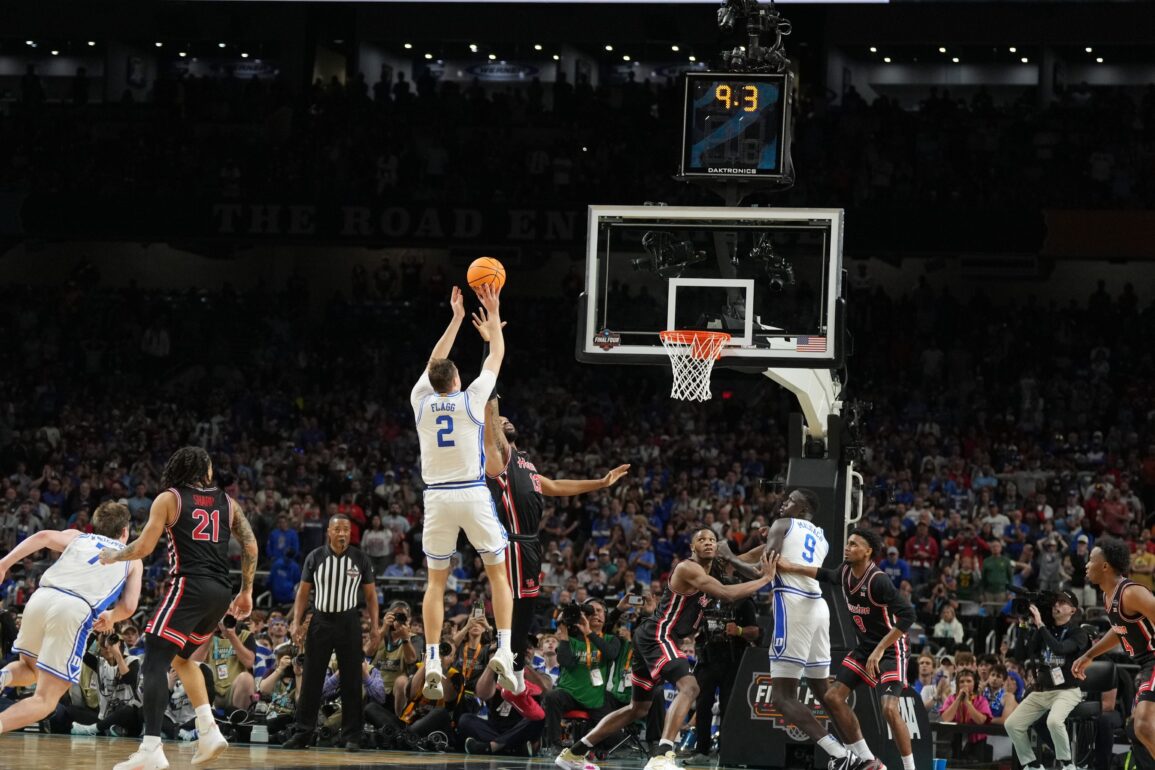
Duke’s Cooper Flagg on late-game miss vs. Houston in Final Four
Cooper Flagg isn’t looking back on his late-game shot attempt vs. Houston.
On Monday night, a national champion in men’s college basketball will be crowned, with either Houston or Florida walking away from the Alamodome in San Antonio with an accomplishment that will permanently etch them into the sport’s record books and lore.
What will follow the game is a comfortably familiar routine.
Players and coaches will gather on a stage and be handed an NCAA championship trophy. Confetti will fall from the rafters. “One Shining Moment” will play on the stadium jumbotrons, with Luther Vandross’ smooth and sultry voice echoing throughout the venue.
Embedded within those festivities is a tradition that’s synonymous with the conclusion of March Madness — the members of the winning team climbing one by one up a ladder and cutting off a piece of the net from one of the baskets on the court where they just won a championship.
After decades of seeing teams snip at the nylon, it has become an accepted ritual, one of the quirks of an event unlike any in American sports. But how did it first get started?
Heading into tonight’s NCAA Tournament championship game matchup between Houston and Florida, here’s a closer look at the origins of celebratory net-cutting:
Why do teams cut down the nets in March Madness?
While there’s some murkiness to the exact origins of net-cutting, it’s generally believed to have started at the high school level in the basketball hotbed of Indiana in the 1920s.
One of more prominent figures from the Indiana high-school basketball scene of the time eventually brought it to the college ranks.
Everett Case was a decorated high school coach in Indiana in the 1920s and 1930s, winning four state championships over the course of a 23-year tenure. Shortly after the conclusion of World War II, he was hired as the men’s basketball coach at NC State and during his nearly two-decade stint at the school from 1946-64, he helped change the way college basketball teams memorialized their title-winning heroics.
After the Wolfpack won the Southern Conference tournament championship near the end of Case’s first season in 1947, the coach climbed atop his players’ shoulders with scissors in hand and trimmed off a piece of the net as a souvenir.
Word of Case’s celebration eventually spread and caught on, with other teams across the country eventually mimicking it and incorporating a ladder rather than having sweaty, potentially exhausted players bear the weight of hoisting up another human being.
The tradition has become more formalized in recent years, so much so that the NCAA even has official ladder and scissor sponsors (Werner and Fiskars, respectively).
There have been occasional mishaps, as one might expect when adrenaline-fueled individuals in a moment of triumph are handed a sharp object. In 2017, for example, Michigan assistant coach Billy Donlon needed three stitches after cutting his hand while passing the scissors off to fellow assistant Jeff Meyer.
When do teams cut down nets?
The ceremonial cutting of nets isn’t reserved solely for whichever team wins the national championship.
Teams will often cut down nets to commemorate a win in the Elite Eight — which earns them a spot in the Final Four, a program-defining accomplishment at many schools — or if they win a conference tournament championship. Others will bypass it, choosing instead to only cut the nets for a national title.
There’s not a strict net-cutting regimen that must be followed, but generally, teams will have players go up the ladder in order of seniority, with the head coach often cutting the final strand and holding on to the net.
Players typically keep the strand of the net that they cut off as a souvenir.
This post was originally published on this site be sure to check out more of their content.







